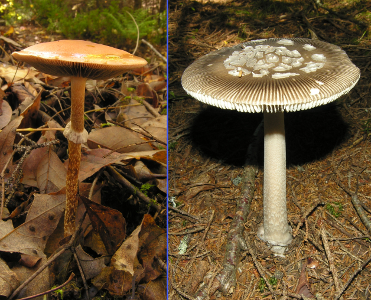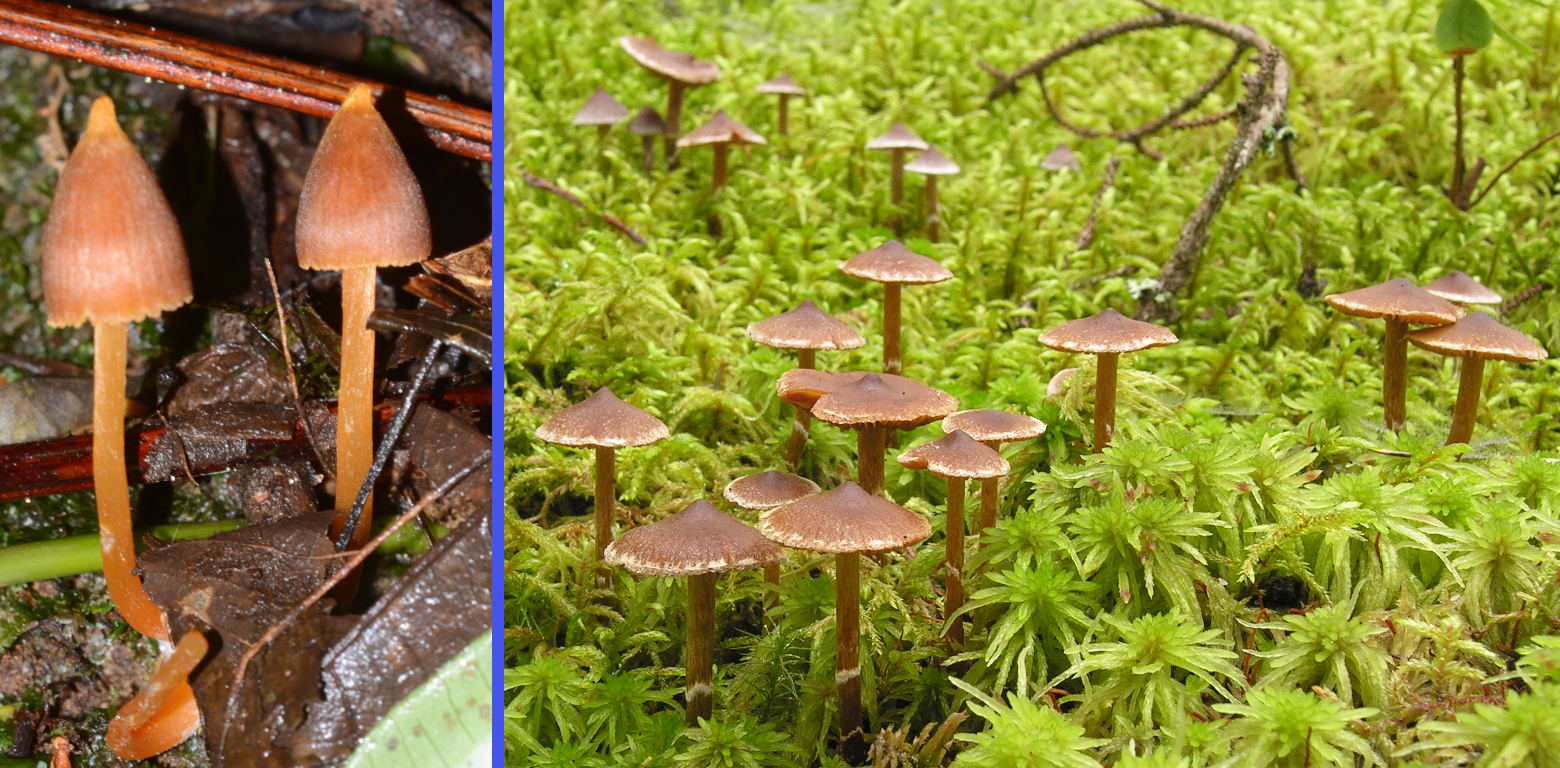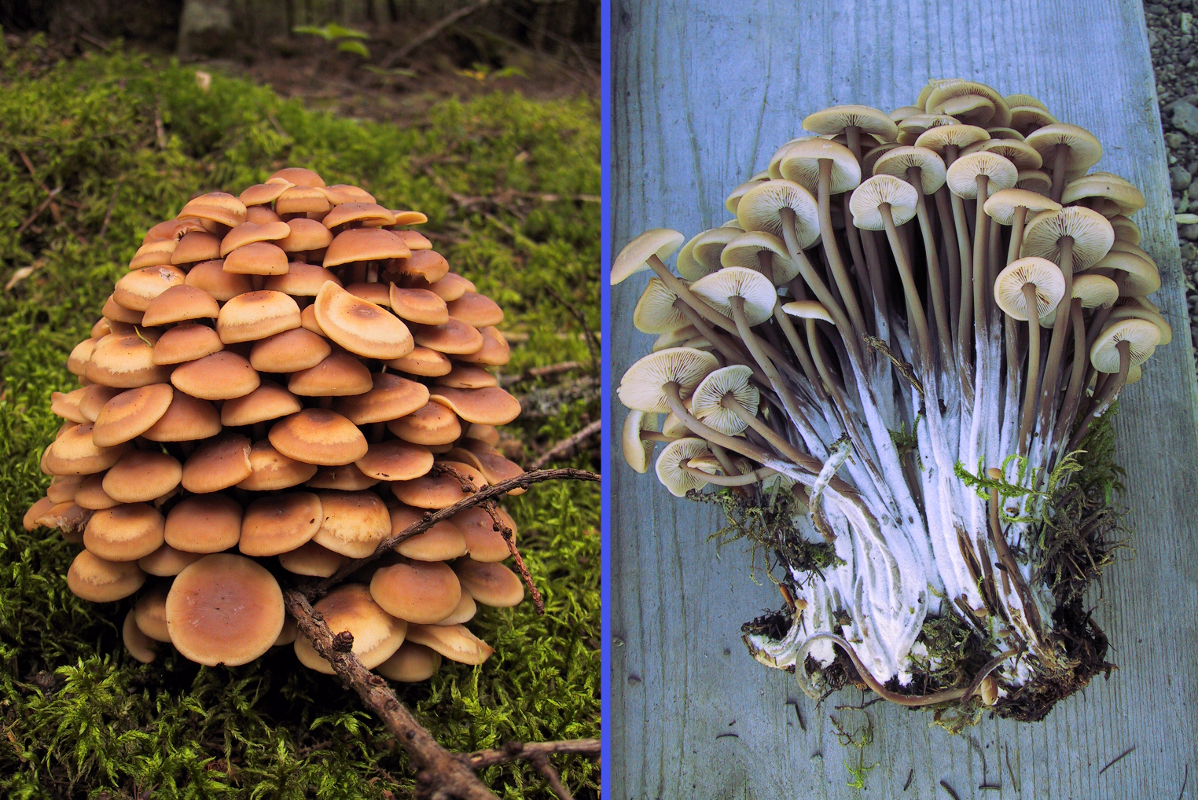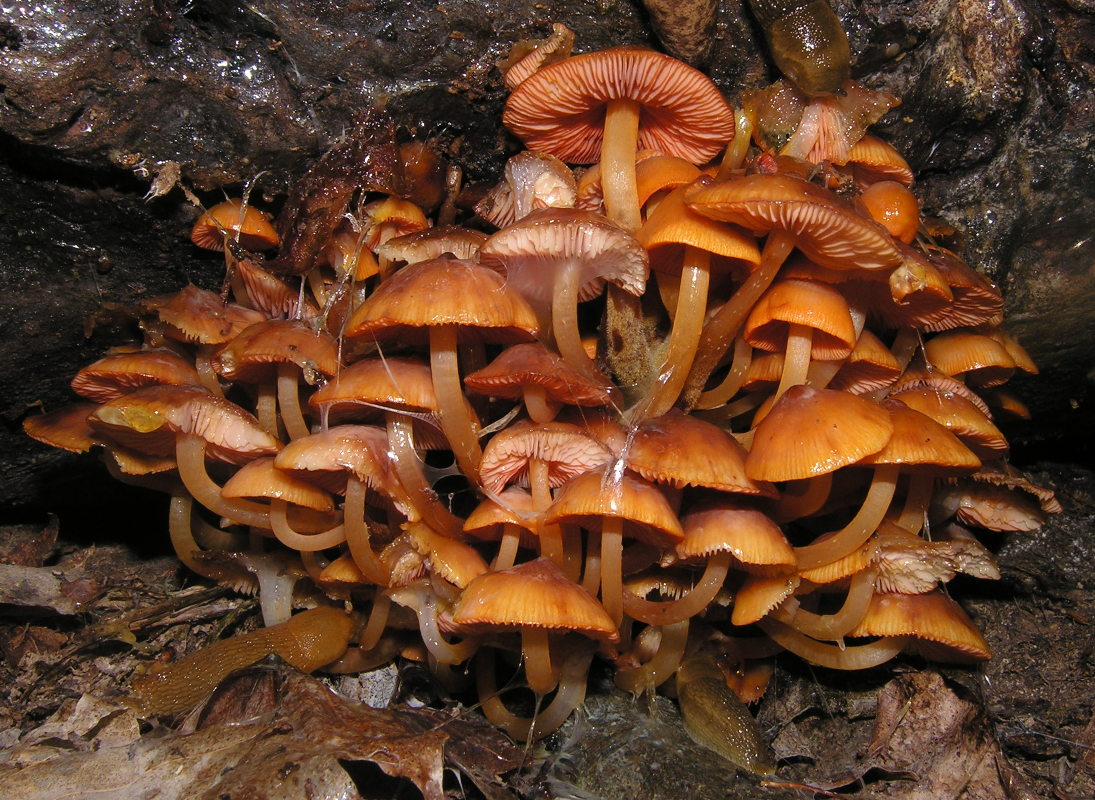GROWTH HABIT
Mushrooms differ from one another in their growth habit. Some are found as individuals but more often they occur in groups of two or more in characteristic relationships to one another.

While collecting you often find mushrooms occurring as a single fruiting body. Of course many species may be found this way at times, but some species always seem to fruit alone. When collecting for scientific study we often pass over these "singles" because we know that by the time we get it back to our work station, write notes, dry it, and then later use it for microscopic study there may be little of it left for the permanent collection. This is especially true for very small mushrooms. Experience helps here; if you know that a particular species is likely to be found later in the day you may choose to leave the singles where they are. Other species are uncommon enough that one fruiting body is better than none. You just have to use your judgement. Psilocybe squamosa, at near right and Amanita ceciliae, far right, are both likely to be found fruiting alone and should not be passed over in hopes of finding a larger patch

Most mushrooms do not occur alone but are characterized as "gregarious". Sometimes, as in the tropical species of Entoloma at far left, there are just two or only a few. At other times you may find great numbers of a species growing over a fairly large area as shown with Cortinarius flabellus at near left. Some mycologists say that such large groups of mushrooms are growing in "troops". Gregarious mushrooms fruit in groups but definely occur as individuals and do not arise from a common base.


"Cespitose" mushrooms grow in tight clusters and have their stipes arising from a common origin. Mycena leaiana, at near right, is a species commonly found in eastern North America on dead hardwood logs. This particular specimen was photographed in the Caledonia Gorge Protected Natural Area in eastern New Brunswick. Like much of the coast of the Bay of Fundy, the moist climate Caledonia Gorge is a haven for slugs. The mushroom in this picture has attracted at least five of these slugs in all their slimy magnificance. Click on the photograph to view an enlargement and see if you can spot all five slugs. Perhaps you are sharp-eyed and can discover a sixth.
The two pictures at far right show basidiomata of Gymnopus acervatus, one in its natural setting and one dug out to illustrate the tightly compacted stipes. Gymnopus acervatus is common in our coniferous forests and is probably the most overtly cespitose mushroom we have.